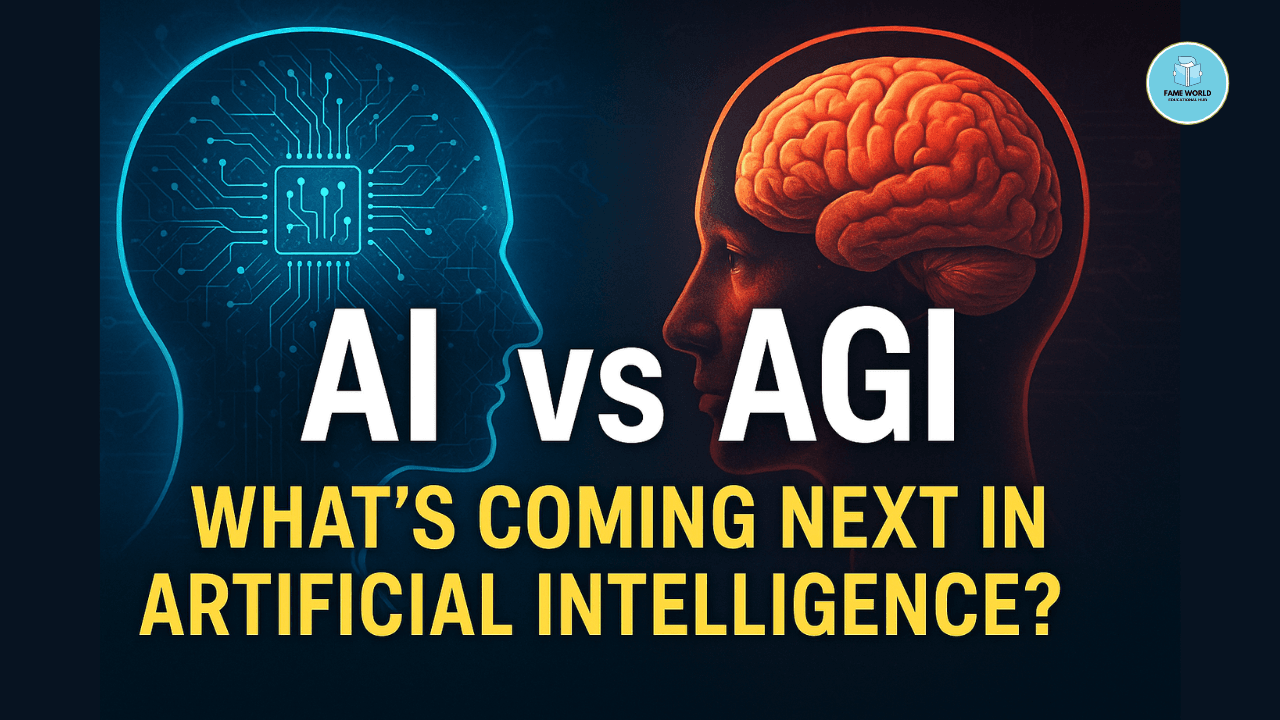Artificial Intelligence has become a household term. From Siri in your phone to Netflix recommending what to watch, AI quietly shapes our digital lives. But behind the headlines and hype lies a deeper evolution — one that may soon shift from AI to something much more powerful and unpredictable: AGI, or Artificial General Intelligence.
So what exactly is the difference between AI and AGI? And what does the future hold as we inch closer to building machines that could one day think like humans?
Let’s dive into this technological transformation and explore what’s coming next.
Understanding Today’s AI
AI, as we experience it today, is known as Narrow AI or Weak AI. It’s designed to handle specific tasks — recognizing faces, translating languages, detecting fraud, or powering self-driving cars. These systems rely on vast datasets and complex algorithms, excelling at pattern recognition and task automation. But their intelligence is narrow and restricted. They can’t apply knowledge beyond the domain they were trained for.
For example, a chess-playing AI can defeat a grandmaster, but it cannot cook a meal or understand a joke. These systems simulate intelligence without actual understanding or awareness.
The AGI Frontier
AGI, or Artificial General Intelligence, represents a leap beyond. It’s the idea of creating machines that can understand, learn, and reason like a human being — across any task, in any context.AGI wouldn’t just master a specific skill. It would learn how to learn. It could analyze new situations, solve unfamiliar problems, and adapt on the fly, much like humans do. Think of an AI that not only plays chess but also paints a portrait, composes a song, and debates philosophy — all without specific training in each domain.
In short, AGI aspires to be truly intelligent, not just functionally capable.
Are We Getting Close?
Recent advances in AI models, particularly large language models (LLMs) like ChatGPT, have sparked debate about how close we are to AGI. These systems can write essays, summarize articles, generate poetry, and even mimic human conversation. Some researchers argue this is a glimpse of general intelligence. Others caution that these models are still fundamentally statistical — excellent at pattern prediction, but lacking true understanding.
As it stands, most experts agree we haven’t achieved AGI yet. But the rapid pace of development means that the boundary is blurring. Some predict AGI within the next 10 to 20 years. Others believe it’s still a distant vision — or that we may never reach it at all.
Why AGI Matters
The arrival of AGI would represent one of the most significant milestones in human history. With AGI, machines could solve problems currently beyond our capacity — from curing complex diseases to climate modeling, from designing new energy systems to understanding the universe itself.
But it also brings challenges.
What happens when machines can think faster, learn quicker, and innovate more efficiently than humans? How do we ensure AGI remains aligned with human values? Who controls it, and what safeguards are in place?
These are not just technical issues — they’re ethical, social, and philosophical.
The Risks and the Hopes
The potential risks of AGI are real. A system with general intelligence could theoretically develop its own goals — which may not align with ours. Without robust control mechanisms, AGI could pose existential risks, according to figures like Elon Musk and researchers at organizations like OpenAI and DeepMind.
On the flip side, AGI could unlock solutions to our greatest global challenges. It could usher in a new renaissance of creativity, productivity, and discovery — transforming industries, education, medicine, and more.
The future of AGI isn’t just about what we can build, but what we should build — and how we prepare for it.
What’s Coming Next?
In the near term, we’ll likely see AI systems that get better at reasoning, memory, and abstraction. Multi-modal models — capable of understanding text, voice, images, and video together — will become more prevalent. We’ll also see more human-like interactions and AI assistants that feel increasingly intuitive and intelligent.
But achieving AGI will require breakthroughs in multiple areas: neuroscience-inspired architectures, unsupervised learning, common sense reasoning, and possibly consciousness modeling. We’re not just building smarter systems — we’re trying to decode the essence of intelligence itself.
Final Thoughts
AI is already reshaping our world — and AGI could redefine what it means to live, work, and think in the 21st century. As we stand on the edge of this new frontier, the big question isn’t just if AGI is coming — it’s how we’ll respond when it does.
Will it be the ultimate tool for human progress? Or a force we struggle to control?
One thing’s for sure: the age of intelligence — both artificial and general — is just beginning.
Share your thoughts:
Do you believe AGI will be a positive force for humanity, or do you have concerns about where it’s heading? Leave a comment below and join the conversation.
#ArtificialIntelligence #AGI #FutureTech #MachineLearning #AIvsAGI #Superintelligence



